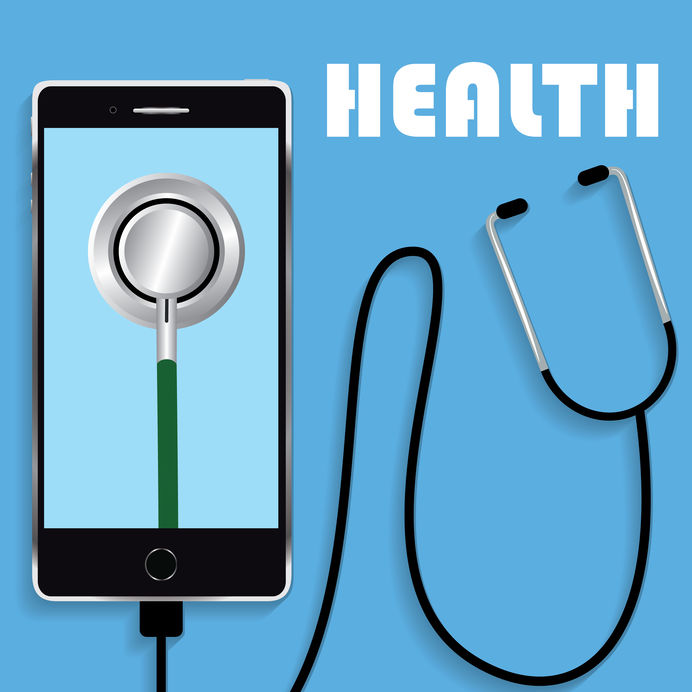How Telehealth Is Transforming Patient Care During COVID-19

Smart Phone and stethoscope. Medical health care and medicine mobile consultant. Vector illustration
With an unforeseen global pandemic taking the nation by storm, accessible healthcare has been difficult to obtain. Hospital beds are full, doctors’ offices are temporarily closed, in-person is treatment limited, and people almost everywhere are under a period of lockdown for the time being. Luckily, thanks to telehealth services, patient care has never been so easy.
What is Telehealth?
The Health Resources Services Administration defines telehealth as, “The use of electronic information and telecommunications technologies to support long-distance clinical health care, patient and professional health-related education, public health and health administration.” These technologies include anything from the internet, video conferencing, streaming media, store-to-forward imaging, and terrestrial and wireless communications.
Telehealth & Patient Care During COVID-19
From online consultations with healthcare providers to prescription medications available for at-home delivery, telehealth services have become a key technology for safe and efficient communication between healthcare providers and patients during the coronavirus. Regardless of whether a patient has COVID-19 symptoms or another minor illness, telehealth services can offer assistance to just about anyone.
Patients with COVID-19 Symptoms
Besides acting as a simple solution for patients with minor illnesses who’re unable to meet in-person with their normal physician, telehealth has also helped symptomatic COVID-19 patients speak with a doctor from the comfort of their own home, therefore reducing the spread of the virus from the mass population and medical staff on the frontlines.
In turn, this has allowed some of the pressure to be taken off of the healthcare providers who are working tirelessly to manage emergency rooms and other clinics. Specifically, telehealth works to minimize the exposure of COVID-19 and separates patients from at-risk and non-at-risk groups.
Patients with Minor Illnesses
As healthcare restrictions remain a prevalent issue in today’s society, patients with minor illnesses are being asked and encouraged to seek treatment from online doctors through the utilization of telehealth. What’s considered to be a “minor illness” may vary from person-to-person, but generally speaking, a “minor illness” is anything that isn’t thought to be immediately life-threatening to a patient.
Dermatology, for instance, is one healthcare field that has turned to telehealth and telemedicine to treat patients in the time of COVID-19. Teledermatology has served to save money in the healthcare systems as it allows patients with particular skin concerns, like acne or wrinkles, to seek proper medical advice and accessible treatment options from a skincare expert.
Along with teledermatology, dentistry, mental health, and sexual health services have all been racing to adopt telehealth and telemedicine in an attempt to virtualize their treatment approaches as the number of coronavirus cases continue to surge. Virtual appointments, patient portals, and remote monitoring are just a few ways in which they’ve adapted their practice to better serve the needs of their patients and their unique health concerns.
Which Telehealth Platform Is Right For You?
Despite the benefits telehealth has to offer, not every platform is right for everyone. Depending on the particular health concern you’re looking to seek treatment for, the type of platform you use may vary.
For example, patients struggling to keep their mental health in line will probably use a telehealth service that’s different from one for patients looking to refill their migraine script from their primary physician. However, some telehealth and telemedicine platforms are fit to treat multiple healthcare concerns, so be sure to do your research before doing anything.
In addition, it’s also a good idea to consider other factors such as your age, gender, location, and health insurance plan before utilizing telehealth. Some platforms are geared towards a specific audience and/or are covered by insurance. So, what may work best for you, may not be the best option for your partner or another family member. Remember to weigh these factors out when deciding which telehealth platform is right for you.
How to Prepare for an Online Clinician Call
Similar to the way you prepare for an in-person doctor’s visit, it’s critical that you take some time to prepare for an online clinician call before you meet with them virtually.
For patients with COVID-19 symptoms, clinicians will typically use this virtual call to determine the level of risk group you’re in— low, medium, or high— as well as the severity of the upper respiratory infection that could be occurring due to the coronavirus.
That said, it’s critical to take some time evaluating your symptoms before the call so they can be as concise as possible with their medical assessment. Even if you’re consulting with a clinician for a minor illness, you’ll want to be sure to write down a few main symptoms of concerns to touch on during the call.
Moreover, Harvard Health publishing recommends preparing yourself to answer a few questions that may seem irrelevant or tedious as these will further help your clinician assess your health concerns. And lastly, to ensure you best utilize yours and their time, avoid the urge to ask any nonmedical related questions as this will stray away from the purpose of the clinician call.



































